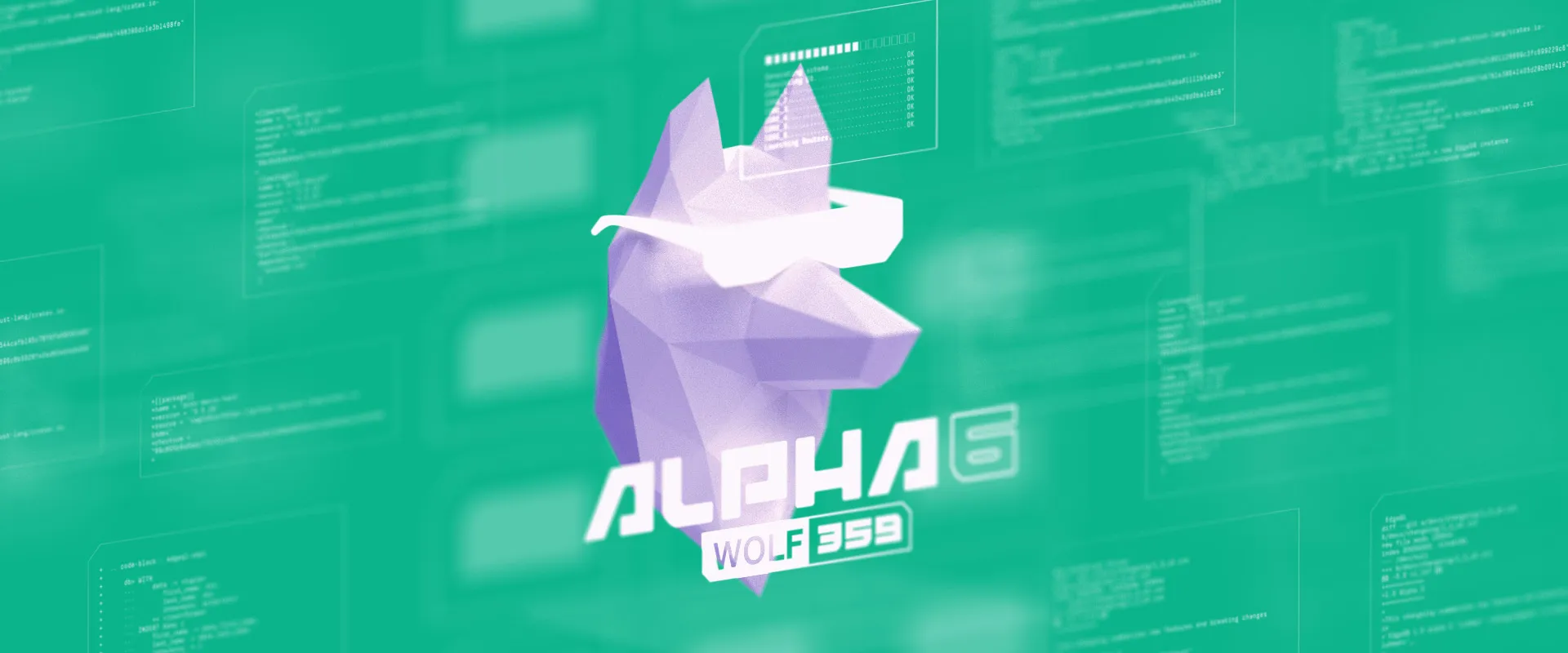After another six weeks of work since the previous release, we have another alpha release for you. Sticking to our near star naming scheme, this one’s called EdgeDB 1.0 Alpha 5 “Luhman”. You can download it in a number of ways or try it out in our interactive tutorial without the need to install anything.
There’s some important improvements requested by our users in this release, as well as another round of changes designed to make database administration easier. Let’s take a look at what’s in store!
What’s EdgeDB
EdgeDB is an advanced open source relational database based on PostgreSQL. The project aims to give developers and data engineers a highly efficient and productive database technology while addressing the shortcomings of SQL and its surrounding ecosystem:
-
high-level data model and type system;
-
a powerful, expressive and extensible query language that allows working with complex data relationships easily;
-
first-class support for schema migrations;
-
support for converting arbitrary strictly typed data to and from JSON via a simple cast operator;
-
out-of-the-box interoperability via REST and GraphQL.
Simplified Administration with Named Instances
When you install a given version of EdgeDB, what you’re getting is a database cluster which can hold multiple logical databases with independent schemas within the same operating system-level service.
Connecting into one of those database instances traditionally required you to store the credentials to it and pass them explicitly to the database client, for example in the form of a Data Source Name (DSN) string.
We think there’s a better way. Just as the SSH client stores your keys
in ~/.ssh/, and the AWS CLI stores its credentials in
~/.aws/credentials, the EdgeDB CLI now can store your credentials
in ~/.edgedb/credentials/<instance-name>.json.
Since beta 3, EdgeDB has changed where it stores credentials and
other files. Run edgedb info to find where these files are stored on
your system.
Those get written automatically during database instance setup with
edgedb instance init. Better yet, you can then connect to such an instance
just by passing its name instead of a full DSN to the EdgeDB client, like:
import edgedb
conn = edgedb.connect('my_instance')
conn = await edgedb.async_connect('my_instance')
pool = await edgedb.create_async_pool('my_instance')In the latest bindings these API’s have been simplified into a
single create_client() API. See the RC2 blog post
for details.
Listing all local instances can be done by a simple call to
edgedb server status --all.
We believe such quality-of-life improvements will make day-to-day operations easier as well as more secure.
“Upserts”
There’s a popular database interaction where the client needs to either insert a new object or update an existing one identified with some key. Those operations are affectionately called “upserts”. There are also analogical variants where the user wants to either select existing data or insert new data if none were present.
Traditional databases and popular ORMs provide limited support for
performing such operations atomically, efficiently, and ergonomically.
This was another area where we thought we can do better, and so with
this release we’re introducing the INSERT ... UNLESS CONFLICT ... ELSE
operation. You’d use it like this:
WITH MODULE people
SELECT (
INSERT Person { name := "Łukasz Langa", is_admin := true }
UNLESS CONFLICT ON .name
ELSE (UPDATE Person SET { is_admin := true })
) { name, is_admin };To express a get-or-create variant, you would use a SELECT in the
ELSE clause. In the example below we do it to get or create a Person
object representing a famous director. Let’s make it even more interesting,
showing how you can compose EdgeQL queries to use the result of our query
right away to link the director with a newly created Movie object.
INSERT Movie {
title := 'Bladerunner 2049',
director := (
INSERT Person {
name := 'Denis Villeneuve'
}
UNLESS CONFLICT ON .name
ELSE (SELECT Person)
)
}This complex operation is performed entirely within the database, saving on network roundtrips and needless serialization. And yet, it reads well. Looking at the query above, imagine what you would have to change to make the outer insert also become a get-or-create on the movie title.
This composability and regularity is at the heart of what makes EdgeQL better than SQL.
Type-level constraints
Moving parts of the business logic to the database level can help maintain data integrity. One popular example of this is specifying custom constraints on object properties, for example requiring that a given field matches a particular regular expression or is unique.
This time around we go one step further, allowing constraints on entire types. This allows expressing constraints which need multiple properties to compute, for example:
type SmallMagnitudeVector {
required property x -> float64;
required property y -> float64;
constraint expression on (
(.x^2 + .y^2) < 25
);
}Support for casts from JSON to array and tuple types
Previously, only primitive JSON values could be cast to EdgeQL scalar types. In this release, we’ve added support for array and tuple casts of arbitrary complexity:
db> ... ... ... ... ... ... ... ... ... ... ... ... ... ... ...
WITH
data := <tuple<
first_name: str,
last_name: str,
interests: array<str>,
>><json>$input
INSERT User {
first_name := data.first_name,
last_name := data.last_name,
interests := (
SELECT
Interest
FILTER
.label IN array_unpack(data.interests)
)
}Parameter <json>$input:
{
"first_name": "Phil",
"last_name": "Emarg",
"interests": ["fishing", "skiing"]
}Transaction Blocks in the JavaScript Client
We have added an API to run code in a transaction block to our JavaScript client:
const conn = await edgedb.connect('my-app');
await con.transaction(async (tx) => {
// A complex interaction with the DB. The queries will
// be executed in one transaction block.
await tx.execute('INSERT ...');
await tx.execute('SELECT ...');
// Transactions can be nested:
await tx.transaction(async (innerTx) => {
const data = await innerTx.execute('SELECT ...');
await innerTx.execute('INSERT ...', [data]);
});
});
await conn.close();The block accepts multiple statements and will properly abort transactions and roll back on errors. For example:
async function faulty(conn) {
await conn.transaction(async (tx) => {
await tx.execute(`
INSERT Event {
name := 'TXTEST'
};
`);
await tx.execute("SELECT 1 / 0;");
});
}In this case the division by zero error pushes the transaction into an
invalid state. Not only will the block throw a DivisionByZeroError but
also the INSERT of an Event with the name "TXTEST" will be
rolled back.
GraphQL improvements
Native support for GraphQL is definitely handy. We improved it by
allowing multiple mutations in a single mutation query, as well as
enabled sorting on non-trivial paths, reflecting nested aliased types,
and added an exists filter operation.
Imagine that you want to use the GraphQL API to find movie records
that are somewhat incomplete, say they are missing director
information. With exists filter this becomes as simple as:
{
Movie(
filter: {
director: {
exists: false
}
}
) {
id
title
}
}Stored Migrations Are Coming
Last time around we introduced the back-end implementation of the new, much improved workflow for migrations. This time around we’re providing an initial CLI for this new functionality:
-
edgedb migration createallows creating migration scripts; and -
edgedb migrateallows bringing the current database to a specified migration revision (latest by default).
We think this set of features will be an important foundation of successful EdgeDB adoption. We’ll spend more time on this topic next time around. You can read more about migrations in the relevant open RFC document.
Summary
As usual, the change log provides a detailed story of the changes in this release.
If you have any questions, feel free to join the conversation on GitHub Discussions, or ask in form of a bug report or a feature request.
If you’d like to learn more about our tech stack, we recently started a
YouTube channel. At the moment we’re running a series
introducing Python’s asyncio. We’re up to five released episodes
with the sixth just around the corner.
For future announcements, you can find us on Twitter.


